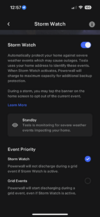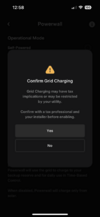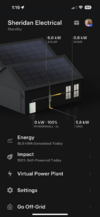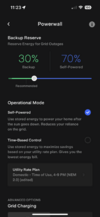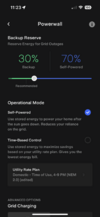I have a pending installation of 2 PWs, gateway and critical loads panel with existing 10kw solar that is stalled due to some vendor conflicts. Without getting into details (in another thread), I have some questions about how Powerwalls, gateway, solar and CTs all work together. A better understanding of this might help me move forward with my project.
1) I live in SCE territory. My primary objective is to, on a daily basis, charge the PWs during non-peak hours when the sun is shining and use the batteries during peak hours when the rates are highest. I know this is a common objective. Are there any caveats? Will I be able to charge in the non-peak hours even on cloudy/rainy days (i.e. from the grid)?
2) My solar currently lands in a sub panel far away from the main panel, gateway and other equipment. Due to vendor issues, I am considering leaving the solar where it is and making the sub panel a critical load from the gateway as a means to get solar output to the gateway. If I do this, is it imperative that I have a CT measuring just the solar output and separate CTs on the loads or can have a single (at the gateway) CT which I'm assuming would measure the net of the solar against the loads in the sub panel? I don't care about seeing the actual solar generation data in the Tesla app. I have that in my Enphase app.
3) The main panel has a single 400amp input. If I execute the plan in (2) above, the main panel will have only the non-backed-up loads and a breaker feeding the gateway. Do I need CTs on all of the non-backed-up loads or do they matter?
4) Does the Gateway enforce the charging policies (rules for when to charge, how much, etc.)? Or is that done at the PWs themselves? Or, something else? What parameters determine when batteries get charged or not and how are those affected by the CT readings?
Sorry if these questions seem too basic. I'm trying to resolve an installation issue and need to understand the possible ramifications of any proposals I make.
1) I live in SCE territory. My primary objective is to, on a daily basis, charge the PWs during non-peak hours when the sun is shining and use the batteries during peak hours when the rates are highest. I know this is a common objective. Are there any caveats? Will I be able to charge in the non-peak hours even on cloudy/rainy days (i.e. from the grid)?
2) My solar currently lands in a sub panel far away from the main panel, gateway and other equipment. Due to vendor issues, I am considering leaving the solar where it is and making the sub panel a critical load from the gateway as a means to get solar output to the gateway. If I do this, is it imperative that I have a CT measuring just the solar output and separate CTs on the loads or can have a single (at the gateway) CT which I'm assuming would measure the net of the solar against the loads in the sub panel? I don't care about seeing the actual solar generation data in the Tesla app. I have that in my Enphase app.
3) The main panel has a single 400amp input. If I execute the plan in (2) above, the main panel will have only the non-backed-up loads and a breaker feeding the gateway. Do I need CTs on all of the non-backed-up loads or do they matter?
4) Does the Gateway enforce the charging policies (rules for when to charge, how much, etc.)? Or is that done at the PWs themselves? Or, something else? What parameters determine when batteries get charged or not and how are those affected by the CT readings?
Sorry if these questions seem too basic. I'm trying to resolve an installation issue and need to understand the possible ramifications of any proposals I make.



